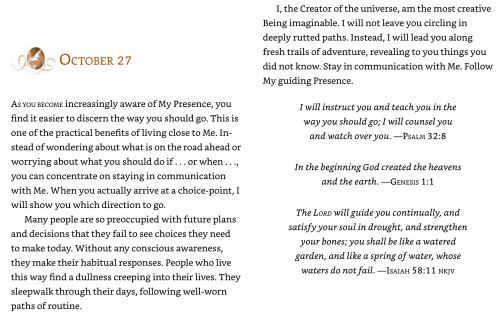Falling Away from I AM
Tuesday, October 27, 2020
To be nothing
Is to consent to being a simple creature.
This is the place of encounter with
“I AM that I Am.”
When there is no more “me, myself, or mine,”
Only “I AM” remains.
Then the “I” may fall away,
Leaving just the AM. . . .
—Thomas Keating, “Out of Nothing”
In her latest book, Cynthia Bourgeault talks about the significant position Thomas Keating held in her life as a teacher and spiritual father [1]. Their relationship makes her reflections on his poetry a poignant example of how to be a compassionate witness to the suffering and transformation of someone we love. Here Cynthia describes Thomas’ journey through all the dark nights a human can experience:
In this poem, one of the last in the collection, there can be no doubt that Thomas Keating is indeed talking about an elusive third dark night, what Bernadette Roberts called “the experience of no-self.” [2] Its radical stripping is far deeper than the dismantling of our “emotional programs for happiness” that occurs in the Dark Night of Sense. It is even deeper than the fruit of the Dark Night of Spirit, which is the dissolution of the separate self into unitive consciousness. Thomas is here alluding to a third and yet more fundamental dissolution: the collapse of the self-reflective mechanism itself, that unique property of human consciousness which makes me realize “It is I who am experiencing this.” Oneness is attained not through an even more intense experience of union, but through a simple suspension of the subject/object polarity that created the perception of twoness in the first place. There is a whole new operating system at work now.
As Thomas writes, “When there is no more ‘me, myself, or mine,’ / Only I AM remains.”
When there is no fixed point of reference to “take it home to,” to make it about “my experience of I AM,” then there is only the bare “I AM.” Then even that may shed its skin. “Then the ‘I’ may fall away, / Leaving just the AM.” . . .
Those who have reflected on the biblical account will quickly catch the double meaning of the repeated use of “I AM” in this poem. It describes not only our own self-reflexive awareness; it is also the name by which God reveals Godself to Moses in the wilderness. “Who shall I tell them has sent me?” asks Moses. To which God replies, “I Am that I Am” [Exodus 3:14]. (In Hebrew, YHWH is the sacred, unutterable name of God.)
Thomas Merton said something quite like this shortly before his own death. He stated,
You have to experience duality for a long time until you see it’s not there. . . . Don’t consider dualistic prayer on a lower level. The lower is higher. There are no levels. Any moment you can break through to the underlying unity which is God’s gift in Christ. In the end, Praise praises. Thanksgiving gives thanks. Jesus prays. Openness is all. [3]
That, I believe, is the real teaching awaiting us in this poem and manifest in Thomas Keating’s own life.
